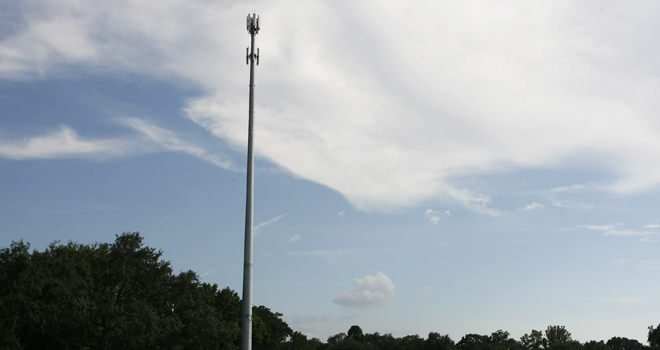An insufficiently redacted regulatory filing mistakenly filed with the Federal Communications Commission last week reveals how AT&T plans to roll out its next generation wireless network. At the same time, it gives the world a glimpse into how the the nation’s largest telecommunications carrier is trying to persuade regulators that its proposed merger with T-Mobile will be good for America.
As TPM reported last week, the botched AT&T filing shows that its executives were not willing to spend $3.8 billion to extend its next-generation LTE wireless technology from 80 percent of the country to 97 percent — unless it is allowed to acquire T-Mobile in a $39 billion proposed deal.
TPM has posted a copy of the controversial filing, and it contains some interesting factoids.
One is the rate at which AT&T plans to roll out its LTE network. It already had planned to roll out the technology to 80 percent of the U.S. by the end of 2013, ramping up in 2012 to 170 million of the U.S. population and then to the full 250 million by the end of 2012.
The other is that AT&T’s lawyers told regulators in an August 4 meeting that covering 97 percent of Americans with its LTE network would require it to increase its physical LTE network coverage from less than a fifth of the U.S. landmass to more than half, and this would nearly double the cost of the network buildout.
The document shows that during its August 4 meeting with FCC officials, AT&T’s lawyers stuck to the company line that its acquisition of T-Mobile would change the economics of rolling out an expensive technology to sparsely inhabited parts of the country.
Among other things, AT&T expects the merger to provide it with a bigger customer base for its LTE network. The technology allows network providers to provide more service to more customers with the same amount of wireless spectrum.
AT&T has said that if it is allowed to merge with T-Mobile, it would deploy its LTE wireless network to more than 97 percent of the U.S. population within six years of the merger’s close.
“Overall, the scale and the scope of the larger combined wireless business will permit the additional capital investment to be spread over a larger revenue base than would be the case absent the merger,” read the filing.
Public opinion is mixed on the benefits of the merger — with many in Congress expressing skepticism, but many venture capitalists and tech companies like Microsoft and Facebook supporting it.
But Dewayne Hendricks, a widely respected telecommunications pioneer who’s had a long history of building wireless networks in rural America, remains skeptical that AT&T will live up to its promise, and that the acquisition will make much of a difference to the economics of a wider LTE build-out.
“These guys make a lot of promises in these deals, but they never keep them, and they’re never held accountable for it,” he said.
“I do not expect them to do what they promise — they never do, because it won’t make sense from a business perspective to do that because of population density,” he added. “America’s a big country. These deals call for them to cover areas where the predominant inhabitants are gila monsters, and this doesn’t make any sense to them, and they avoid spending that money like the plague. It doesn’t matter what the technology is.”
But AT&T says its latest filing actually reinforces the argument for a merger.
“That fact we were unable to justify the significant expense required to expand LTE to 97% of Americans before agreeing to buy T-Mobile simply underscores the tremendous benefits that come from the additional scale, spectrum, customers, and other resources resulting from this deal. And it underscores why it should be approved quickly,” an AT&T spokesman told TPM.
“The bottom line is that without this merger, AT&T could not make this expanded LTE commitment,” he continued. “Federal regulators have before them the facts that demonstrate that this merger will unleash billions of dollars in badly needed investment, creating many thousands of well-paying jobs, both of which are vitally needed given our weakened economy.”









